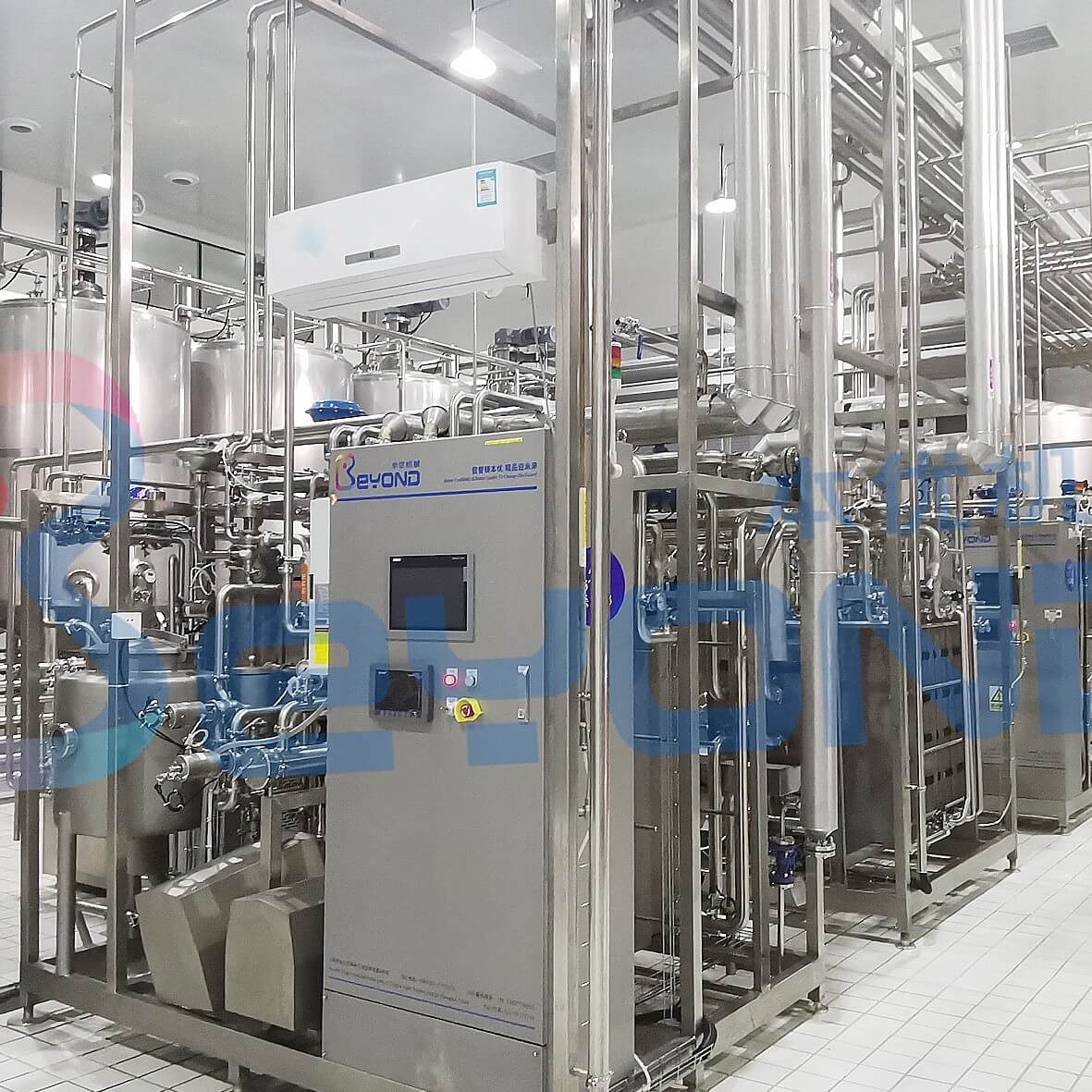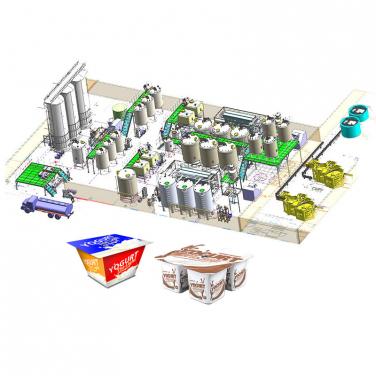
Pasteurized dairy products are popular all over the world, and many people need such food every day. This group of products includes whole milk, skimmed milk, standardized milk and various types of cream. Fermented milk products are also included in this category, which are made from special bacterial cultures. The production process of pasteurized milk products can be fully automated through machinery, and the pasteurized milk processing line can produce a large number of pasteurized milk products, so as to meet the wide demand of people all over the world for this product.
In most countries, clarification, pasteurization and cooling are mandatory stages in the processing of consumer dairy products. In many countries, fat is usually homogenized, while in other countries, homogenization is omitted because a good "cream line" is regarded as evidence of quality. In some cases, degassing will be carried out when the air content of milk is high and there are highly volatile odor substances in the product. This happens, for example, if cattle feed contains onions.
In order to ensure the quality of milk, the Council of the European Union has formulated microbiological standards for milk trade in European Communities to protect human and animal health.
Milk processing in pasteurization Market
According to legislation and regulations, the process line design of pasteurization market milk varies from country to country, even from dairy products. For example, fat Standardization (if applied) can be performed in batches before pasteurization, or online when the standardization system is integrated into the pasteurization unit. Homogenization can be total or partial.
The simplest process is pasteurization of whole milk. Here, the production line is composed of pasteurizer, buffer tank and filling machine. If it has to produce several types of market dairy products, namely whole milk, skimmed milk and standardized milk with different fat content, as well as cream with different fat content, the process will become more complex.
The following assumptions apply to the following plants:
Raw milk
– fat content 3.8%
– temperature +4 ° C
Standardized milk
– fat content 3.0%
– temperature +4 ° C
Standardized cream
– fat content 40%
– temperature +5 ° C
Plant capacity
– 20000 litres per hour
– 7 hours per day
Processing flow of pasteurized milk production line
The typical process flow of pasteurization device for milk sold in the market. Milk enters the device through the balance tank and is pumped to the plate heat exchanger, where it is preheated, and then continues to enter the separator to produce skimmed milk and cream. Set the fat content of the cream in the separator to the desired level and then maintain it at that level, regardless of moderate changes in fat content and feed milk flow rate. For whipped cream, the fat content of cream is usually set to 35% to 40%, but it can also be set to other levels, such as for the production of butter or other types of cream. After solidification, the fat content of cream is kept constant by the control system, which is composed of density transmitter, flow transmitter, regulating valve and the control system of standardization system.
The working principle of the system will be: after the standardization device passes, the cream flow is divided into two streams. One is to transport the milk with sufficient volume per hour to the homogenizer to make the market milk reach the required final fat content, and the other is to transport the excess cream to the cream processing plant. Since the fat content of cream to be homogenized should be up to 18%, ordinary cream must be "diluted" with skimmed milk before homogenization, such as 40%. The capacity of the homogenizer is carefully calculated and fixed at a certain flow rate.
In some homogenizers, the homogenizer is also connected to the skim milk pipeline so that it always has enough products for correct operation. In this way, the relatively low cream flow is compensated by skimmed milk to reach the rated capacity. After homogenization, before pasteurization, finally mix 18% cream with the remaining skimmed milk to 3%. Now the milk with standard fat content is pumped to the heating section of the milk heat exchanger, where pasteurization is carried out. The necessary holding time is provided by a separate holding tube. Record the pasteurization temperature continuously.
The booster pump increases the pressure of the product to a level at which the pasteurized product will not be contaminated by untreated milk or cooling medium if there is leakage in the plate heat exchanger.
After pasteurization, the milk continues to enter the cooling section of the heat exchanger, where it is regenerated and cooled by the incoming untreated milk, and then enters the cooling section for cooling with ice water. Then the cold milk is pumped to the buffer tank and then sent to the filling machine.

The purpose of standardization is to provide a certain and guaranteed fat content for milk. The level varies greatly from one country to another. The common value of low-fat milk is 1.5%, and that of ordinary milk is 3%, but the fat content is also as low as 0.1% and 0.5%. Fat is a very important economic factor. Therefore, the standardization of milk and cream must be carried out very accurately.
In addition to proper cooling, heat treatment is one of the most important processes in milk processing. If properly implemented, these processes will make the shelf life of milk longer.
Temperature and pasteurization time are very important factors, which must be accurately specified according to the quality of milk and its shelf life requirements. The pasteurization temperature of homogeneous, HTST pasteurized milk is usually 72 – 75 ° C for 15 – 20 seconds.
The pasteurization process may vary from country to country. The common requirement of all countries is that heat treatment must ensure significant reduction of spoilage microorganisms and destruction of all pathogens without damaging the product.
The purpose of homogenization is to reduce the size of fat globules in milk to reduce or prevent creaming. Homogenization can be total or partial. Partial homogenization is a more economical solution because smaller homogenizers can be used.
Pasteurized milk production line can be designed according to customers' needs. Generally, we need to know customers' production requirements and raw material characteristics of pasteurized milk production line, as well as some specific conditions of the plant, so that customers can get their own pasteurized milk production line, make full use of customers' funds, and fully meet customers' needs, So that the production capacity of pasteurized milk production line can be maximized.



